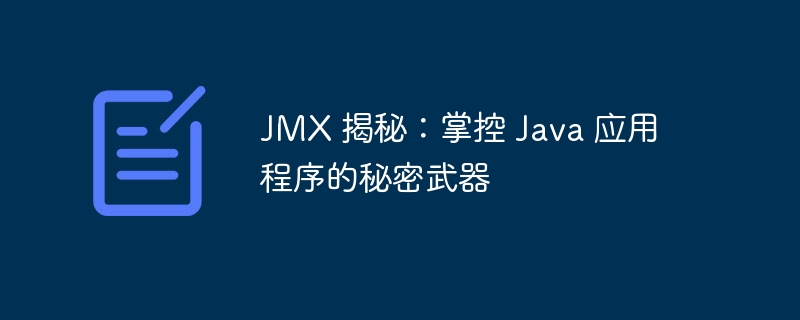

php editor Zimo takes you to reveal JMX, which is the secret weapon for controlling Java applications. JMX (Java Management Extensions) is a standard for monitoring and managing Java applications. It provides a wealth of APIs and tools to help developers monitor application performance, configuration information, logging, etc. Through JMX, developers can monitor the running status of Java applications in real time, discover and solve problems in a timely manner, and improve the stability and performance of applications. Let's delve into the mysteries of JMX and master the skills of Java application management!
JMX Architecture
The core components of JMX include:
Monitor and manage Java applications
JMX provides rich functionality to monitor and manage Java applications:
Demo code
The following short demo code shows how to use JMX to access an application's runtime information:
import javax.management.JMX;
import javax.management.MBeanServerConnection;
import javax.management.ObjectName;
public class JMXDemo {
public static void main(String[] args) throws Exception {
MBeanServerConnection mbsc = JMX.connect();
ObjectName objectName = new ObjectName("java.lang:type=Runtime");
System.out.println("Uptime: " + mbsc.getAttribute(objectName, "Uptime"));
}
}Tools and Resources
Advantage
The advantages of leveraging JMX include:
in conclusion
JMX is a powerful tool that can be used to improve the management and monitoring of Java applications. By leveraging its rich functionality, you can proactively monitor application health, troubleshoot issues, and improve performance. Whether you are a developer, system administrator, or end user, JMX provides you with valuable insights and control to help your applications run optimally.
The above is the detailed content of JMX Revealed: The Secret Weapon for Mastering Java Applications. For more information, please follow other related articles on the PHP Chinese website!




